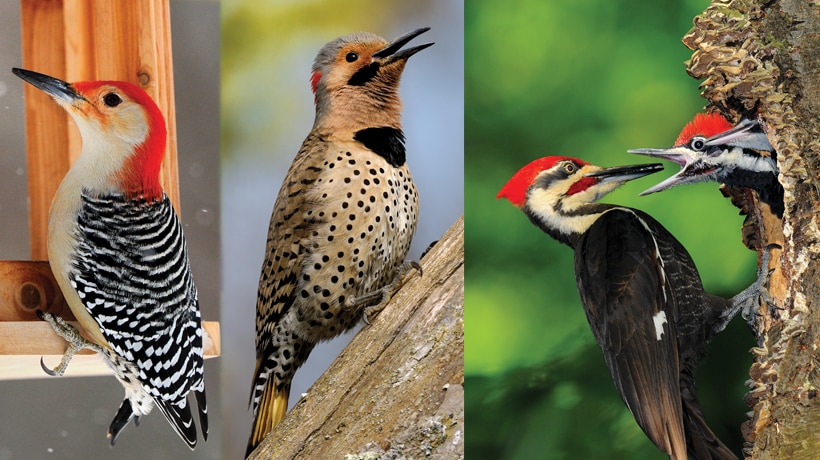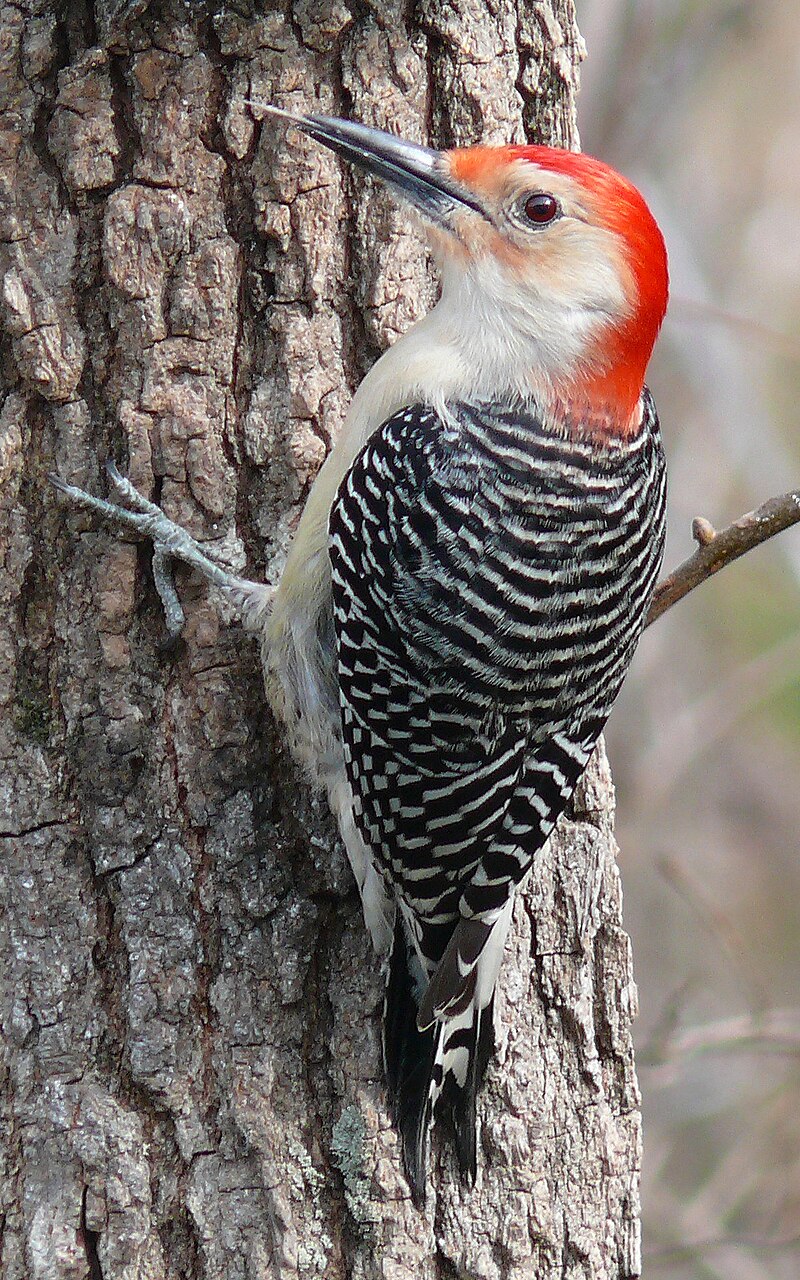Comprehending Woodpeckers in Florida: Actions, Species, and Habitats
Comprehending Woodpeckers in Florida: Actions, Species, and Habitats
Blog Article
Woodpeckers Unleashed: Discovering the Wonders of These Knowledgeable Tree Climbers
Woodpeckers, with their distinctive markings and rhythmic drumming echoing through wooded areas, hold a special area in the bird world. Their specialized makeup and adjustments allow them to navigate vertical surface areas with unequaled skill. However, their proficiency of tree climbing is just one element of their interesting actions. As we look into the intricate details of woodpeckers' nesting practices, feeding techniques, and the continuous preservation initiatives to protect these amazing birds, a much deeper admiration for their area in nature unravels.
Makeup and Adaptations
When taking a look at the makeup and adjustments of woodpeckers, one can observe amazing features that make it possible for these birds to flourish in their specialized ecological niche. Woodpeckers are equipped with a collection of distinct anatomical characteristics that assist them in their woodpecking actions. Among the most famous functions is their strong, chisel-like beak, which is specialized for drilling into wood to discover insects or develop nesting cavities. This beak is supported by strong neck muscle mass and a highly created skull structure that works as a shock absorber, enabling woodpeckers to continuously peck at trees without triggering brain injury. In addition, woodpeckers have zygodactyl feet, with two toes dealing with ahead and two facing backward, giving a company grip on tree trunks while they look for food or drum for communication.
Additionally, woodpeckers have an unique tongue structure that is long, barbed, and sticky, enabling them to draw out bugs from gaps in timber. This specific adjustment allows woodpeckers to make use of a food resource that is hard to reach to several other bird types. Generally, the composition and adaptations of woodpeckers display the impressive evolutionary remedies that have enabled these birds to grow in their arboreal environment.
Drumming Behavior
Having actually checked out the anatomy and adjustments of woodpeckers, the focus now moves to comprehending their drumming behavior, a distinct facet of their interaction and territorial display screens. Drumming is a vital kind of communication amongst woodpeckers, offering multiple purposes such as developing territories, bring in mates, and signaling alarm. Each woodpecker types has a special drumming pattern that aids people acknowledge members of their own varieties and identify them from rivals or predators.
Woodpeckers generate drumming sounds by swiftly pecking on powerful surfaces such as dead trees, utility poles, or perhaps steel items, developing a series of balanced beats. The strength and speed of drumming can differ based upon the purpose; for example, a quick drumming sequence may signify hostility in the direction of trespassers, while a slower and softer drumming pattern might show courtship (Woodpeckers in Florida). Furthermore, woodpeckers might readjust the frequency and period of their drumming to communicate details messages efficiently
Nesting Routines
Checking out the nesting practices of woodpeckers reveals fascinating understandings into their reproductive behaviors and environment choices. Woodpeckers are recognized for their distinct nesting choices, frequently excavating dental caries in trees to create protected areas for raising their young. These tooth cavities offer not just as a nesting website yet likewise as a protected haven from killers and severe weather condition.
Woodpeckers display a high level of fidelity to their nesting websites, commonly going back to the very same area year after year. This actions highlights the value of appropriate habitat accessibility for their reproductive success. The selection of a nesting website is important for woodpeckers, with aspects such as tree species, height, and degeneration phase playing considerable roles in their decision-making process.
Remarkably, some woodpecker species are known to excavate several cavities within their territory, supplying themselves with different nesting choices. This technique might act as a kind of insurance coverage against prospective hazards or disturbances to their primary nesting website.

Feeding Strategies
One of the most unique feeding behaviors of woodpeckers is drumming, which includes fast pecking on trees to uncover pests beneath the bark. Woodpeckers image source are additionally known to dig deep into dental caries in trees to gain access to concealed insect larvae or sap. Some varieties, like the acorn woodpecker, store nuts in particularly produced holes called granaries.
Preservation Initiatives
Amidst the complex feeding strategies showed by woodpeckers, the preservation efforts targeted at protecting these interesting birds play an important duty in preserving their habitats and populations. Woodpeckers face different hazards to their survival, including environment loss due to deforestation, environment change modifying their environments, and collisions with man-made frameworks such as buildings and lorries - Woodpeckers in Florida. Preservationists are actively working to deal with these difficulties and make certain the long-lasting health of woodpecker types
/https://tf-cmsv2-smithsonianmag-media.s3.amazonaws.com/filer_public/30/ac/30acf469-09cd-4fcc-a812-1aa30f477578/aprmay2024_l09_woodpeckers.jpg)
Education and learning and public recognition projects are also important elements of woodpecker conservation initiatives. By increasing recognition concerning the importance of these look at this now birds in keeping healthy resource woodland ecological communities, guardians can gather assistance for environment preservation initiatives and promote accountable land monitoring techniques. With collaborative efforts in between scientists, policymakers, and neighborhood neighborhoods, we can interact to safeguard a future where woodpeckers prosper in their all-natural habitats.
Verdict

Report this page